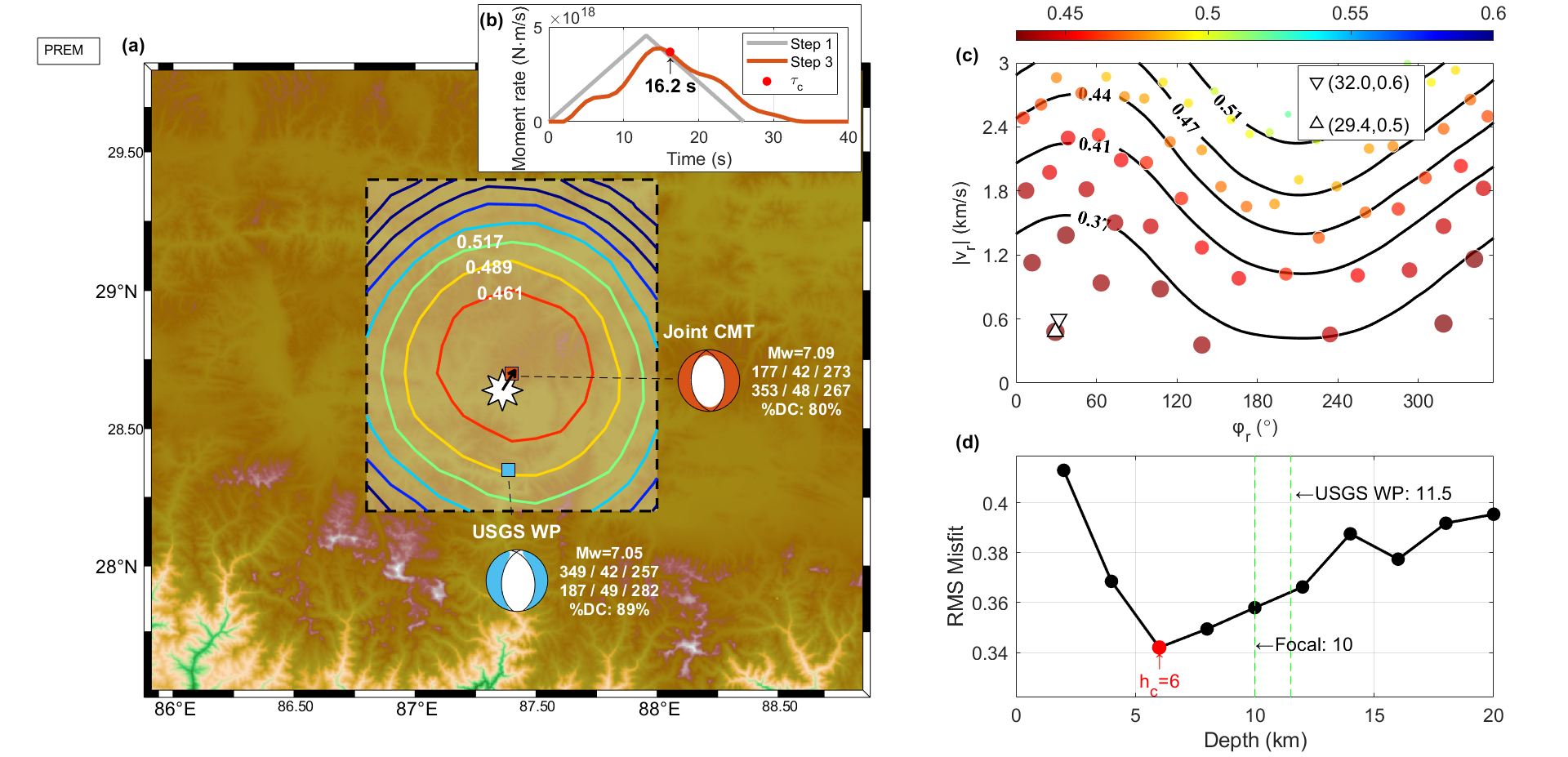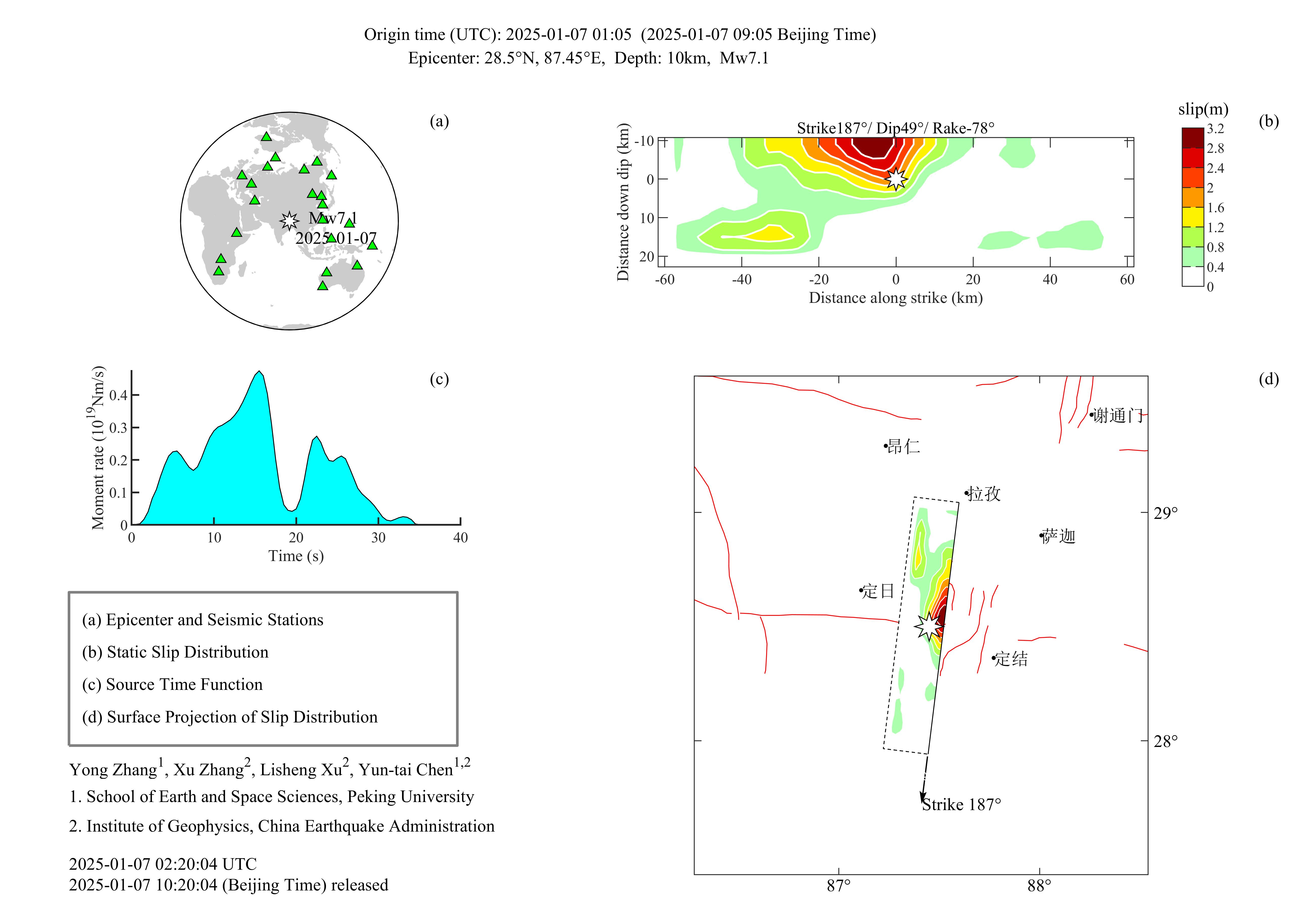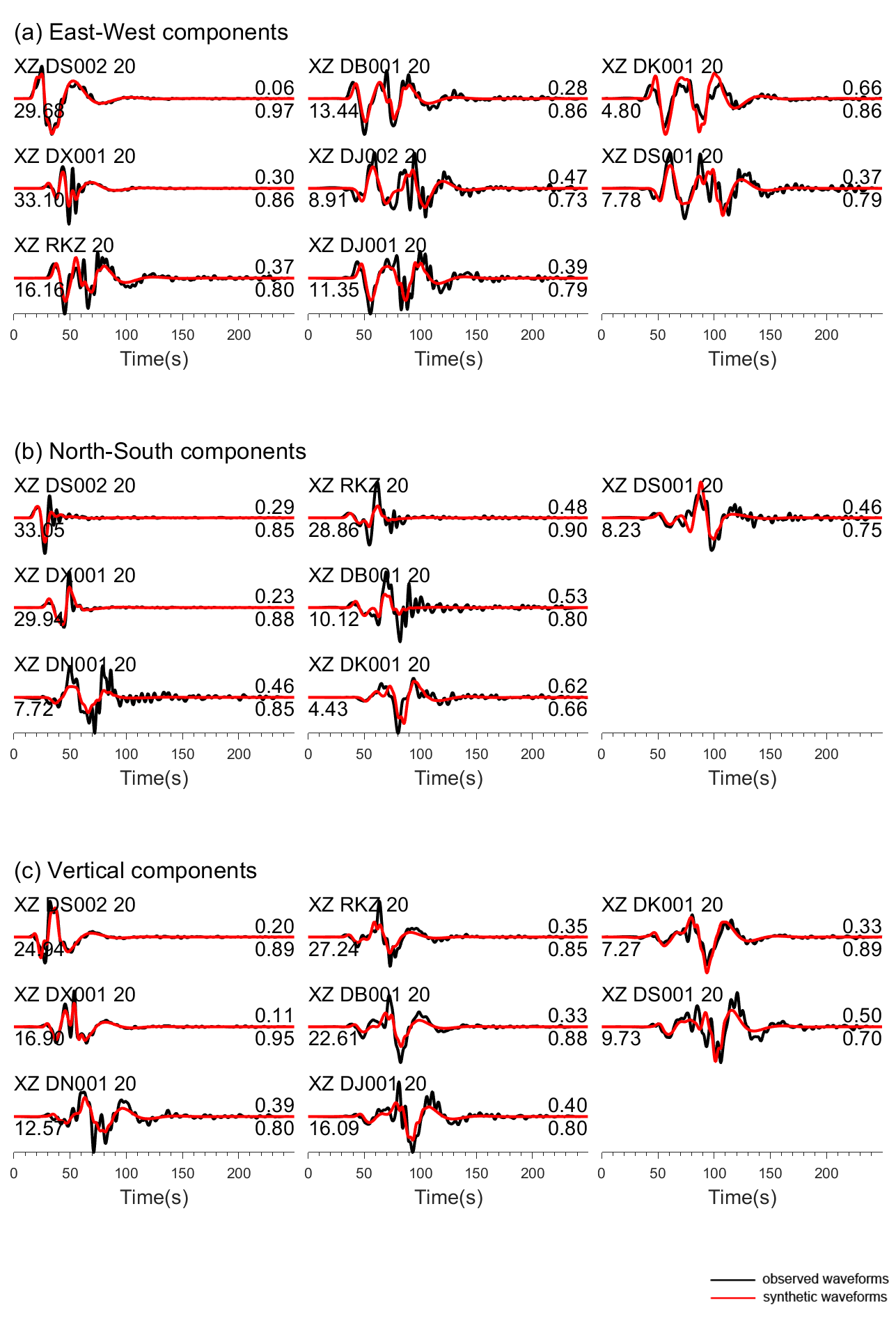2025/01/07 定日M6.8地震震源机制与初步破裂模型
Focal mechanism and preliminary rupture model of the 7 Jan 2025 M6.8 Dingri earthquake
概述
本次地震发生于2025年1月7日09:05:16(UTC+8),矩张量解使用Xu et al., (2023)的联合反演方法给出,速度结构模型基于PREM模型(Dziewonski & Anderson, 1981)以及CRUST1.0模型(Laske et al., 2012)
远震反演所需数据来自IRIS, 采用Ruptel 3.0软件进行反演(Zhang et al., 2012), 格林函数采用QSSP程序(Wang et al., 2017)计算, 所用一维速度结构为AK135模型(Kennett et al., 1995).
强震反演所需数据及定位结果来自中国地震台网中心, 破裂模型的反演基于迭代反褶积叠加(IDS)方法(Zhang et al., 2014; Zheng et al., 2020), 格林函数采用QSSP程序(Wang et al., 2017)计算, 所用一维速度模型提取自USTClitho2.0模型(Han et al., 2021). 选择西倾断层进行强震反演,矩震级Mw=6.9,破裂持续时间约为20秒,破裂方向向北.
强震模型下载: 20250107010516_Dingri_Rupture_Info_1.txt
提供者:北京大学地球物理学系张勇研究组 张勇 徐贝贝 徐晨雨
震源机制解(PREM)

震源机制解(CRUST1.0)

远震破裂模型

波形拟合

强震破裂模型

波形拟合

参考文献
1. Dziewonski, A. M., and Anderson, D. L. (1981). Preliminary reference Earth model. Physics of the earth and planetary interiors, 25(4), 297-356. https://doi.org/10.1016/0031-9201(81)90046-7
2. Han, S., Zhang H., Xin H., Shen W., Yao H. (2021). USTClitho2.0: updated unified seismic tomography models for continental China lithosphere from joint inversion of body‐wave arrival times and surface‐wave dispersion data. Seismol. Res. Lett. https://doi.org/10.1785/0220210122.
3. Kennett, B., Engdahl, E., and Buland, R. (1995). Constraints on seismic velocities in the earth from travel times, Geophys. J. Int. 122, 108–124. https://doi.org/10.1111/j.1365-246X.1995.tb03540.x
4. Laske, G., Masters, G, Ma, Z., and Pasyanos, M. (2012). CRUST1.0: An updated global model of Earth’s crust, Geophys. Res. Abs., 14, 3743.
5. Wang, R., Heimann, S., Zhang, Y., Wang, H., and Dahm, T. (2017). Complete synthetic seismograms based on a spherical self-gravitating Earth model with an atmosphere-ocean-mantle-core structure, Geophys. J. Int., 210, 1739-1764. https://doi.org/10.1093/gji/ggx259
6. Zhang, Y., Feng, W., Chen, Y., Xu, L., Li, Z., and Forrest, D. (2012). The 2009 L’Aquila MW 6.3 earthquake: a new technique to locate the hypocentre in the joint inversion of earthquake rupture process, Geophys. J. Int., 191, 1417-1426. https://doi.org/10.1111/j.1365-246X.2012.05694.x
7. Zhang, Y., Wang, R., Zschau, J., Chen, Y., Parolai, and Dahm, T. (2014). Automatic imaging of earthquake rupture processes by iterative deconvolution and stacking of high-rate GPS and strong motion seismograms, J. Geophys. Res. Solid Earth, 119, 5633-5650. https://doi.org/10.1002/2013JB010469
8. Zheng, X., Zhang, Y., Wang, R., Zhao, L., Li, W., and Huang, Q. (2020). Automatic inversions of strong‐motion records for finite‐fault models of significant earthquakes in and around Japan, J. Geophys. Res. Solid Earth, 125, e2020JB019992. https://doi.org/10.1029/2020JB019992
9. Xu, B. and Zhang, Y. (2023). Joint inversion of centroid moment tensor for large earthquakes by combining teleseismic P-wave and W-phase records. Geophy. J. Int., 234(2): 1143-1156. https://doi.org/10.1093/gji/ggad128